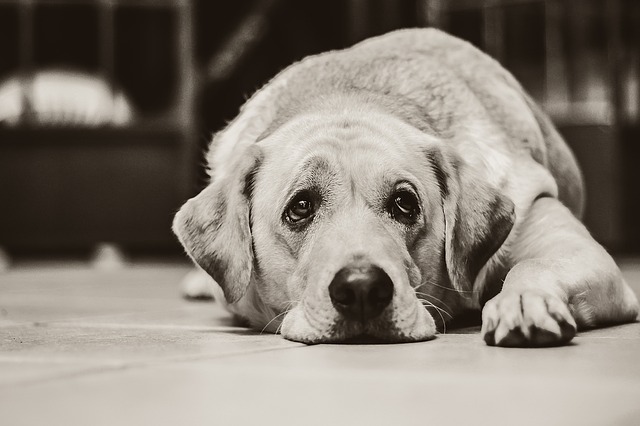
What is Droopy Eye?
Horner’s syndrome refers to a nervous system disorder affecting the eye. The pupils will be small, the eyelid partially closed, and the 3rd eyelid will be elevated and protruding slightly. While not serious on its own, Horner’s syndrome may indicate problems with the nervous system.
“Droopy eye” is a condition in which the nerves to a dog’s eye have been inflamed or damaged. This leads to a number of highly identifiable characteristics that veterinarians refer to as Horner’s Syndrome. First, the dog’s upper eyelid will appear to droop or not fully open. The pupil will be very small and unable to open in response to lowered lighting. Finally, the “3rd eyelid” or nictitating membrane located inside the lower eyelid may appear inflamed or push out, leaving a reddened area above the lower eyelid. This syndrome indicates a lack of nervous system communication and may reflect a deeper problem, especially if your dog is having difficulty walking or swallowing. However, in breeds like Golden Retrievers, Horner’s syndrome may present idiopathically, that is, without any identifiable cause. While somewhat unsightly, Horner’s syndrome on its own does not present a serious risk for your pet.
Related: 10 Best Eye Supplements for Dogs
Symptoms of Droopy Eye in Dogs
- Small, constricted pupil in one or both eyes
- Top eyelid cannot fully open
- Patch of reddened tissue above lower eyelid
- General redness and inflammation
Causes of Droopy Eye in Dogs
- Infection of the spinal cord or brain
- Trauma to the brain, neck or chest
- Brain or spinal tumor
- Infection compromising nervous tissue
- Idiopathic (no identifiable cause)
Diagnosis of Droopy Eye in Dogs
If you notice your pet’s eye exhibiting the above symptoms, you will need to see a veterinarian to make sure there are no associated conditions causing Horner’s syndrome. The veterinarian will want a history of any activities your dog has engaged in that might result in injury, and any observations you may have of abnormal behavior in your dog. Tell your veterinarian if your dog has recently had a tumor or any surgery.
The veterinarian will perform a number of routine tests, usually an analysis of a urine sample, a CBC (an analysis of a blood sample to count the types of cells and their relative proportions), and of course a physical exam. These tests will help the veterinarian to determine the underlying cause, if any, of the droopy eye.
If the veterinarian suspects a tumor, broken bone or injury, medical imaging will be needed. X-ray and ultrasound are useful for showing some types of injury, and can usually be done quickly in a vet’s office. MRI and CT scans require a larger machine, and so your vet may refer you to an animal hospital that has the equipment.
Finally, if your dog has presented with a fever along with abnormal behavior, your doctor may conduct a spinal tap. This involves shaving and sterilizing an area on your dog’s back, and inserting a needle between the vertebrae to collect spinal fluid. An analysis of this fluid will aid the veterinarian in determining if your pet has an infection of the nervous system like meningitis.
Treatment of Droopy Eye in Dogs
The acute symptoms of droopy eye can be treated with eyedrops containing phenylephrine. This will dilate the constricted pupil and reduce the inflammation of the third eyelid. However, if there is an underlying cause, this will need to be treated according to the type of ailment. Spinal infections like bacterial meningitis will need quick administration of lifesaving antibiotics, whereas tumors will need surgical removal, radiation or chemotherapy. In the case of trauma (e.g. car accident, fall etc.), surgical intervention may be required to free pinched or trapped nerves and reduce scar tissue.
Recovery of Droopy Eye in Dogs
Idiopathic droopy eye may sometimes resolve on its own, but to ensure complete recovery, veterinarians often recommend administering phenylephrine eyedrops. These will need to be administered every 12-24 hours for about three weeks.
The outlook for idiopathic Horner’s is very good, usually resolve quickly. The condition may re-appear in cases of dehydration or infection, but is not considered serious and can be treated the same way. The outlook of other conditions with Horner’s syndrome as a symptom will vary, but in general, the droopy eye portion can be resolved the same way, and the underlying cause treated according to a veterinarian’s recommendation.
 Toledo, United States.
Toledo, United States.